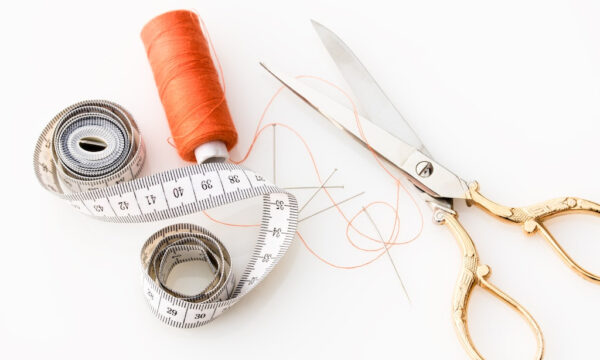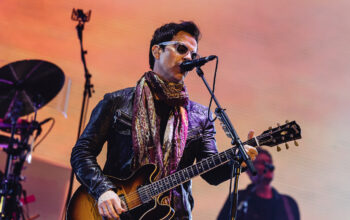Is 2021 the end of brick-and-mortar?

During the past decade – due to the rapid progress of technology – UK society has radically changed. This transformation has taken the form of more advanced surgery equipment, sustainable AI vehicles or a high-speed smartphone in the palm of your hand. However, these technological shifts have also impacted the current context in unexpected manners. As a consequence of these rapid, life-changing innovations which primarily take place in the digital realm, analogue counterparts have experienced declines in business or usage as they gradually become outdated. For these reasons, 2021 may be the beginning of the end of brick-and-mortar retail and services.
Fashion
The fashion sector has been one of the most obvious indicators of this repositioning. Shopping centres have become increasingly barren over the past decade mostly as a result of competitive online stores. However, not only have these digital counterparts absorbed traditional brick-and-mortar businesses by attracting their customers, but they have become so successful – financially and socially – that they have the means to purchase expansive storefronts. For instance, in January 2021, the digital retail giant Boohoo bought out Debenhams for £55 million. The acquisition of this 243-year-old department store by a 15-year-old online fashion start-up aptly demonstrates this change in societal norms when it comes to purchasing clothing. Those who have been hesitant to order from virtual fashion retailers may no longer have the option not to as this decade progresses.
Retail
In regard to general retail, Amazon has made a visible, undeniable dent in the business of thousands of small, brick-and-mortar companies. The expansive worldwide facilities and digital infrastructure of Amazon allow the retail giant and its subsidiaries to provide almost unparalleled services to its customers. Rather than specialising in particular items, Amazon’s online platform allows users to purchase almost anything and receive it the next day – and in some instances later on that day – with a tap of their finger. This rapid order fulfilment has saturated all corners of the retail marketplace, making them a leading distributor of millions of products.
Gaming
Traditional gaming retailers are becoming more obsolete. As more video games are available in console app stores as well as online, many don’t find their brick-and-mortar counterparts essential anymore. This attitude has expanded to the whole gaming world, including conventions. While large global conferences have still occurred in recent years – such as Eurogamer Expo, Tokyo Game Show and The Game Awards – those that are smaller and more specialised have begun to fade away. This decline is due to the exponential growth of players meeting – and staying – online. Social media, as well as gaming, platforms allow those with specific common interests to form extensive virtual communities to socialise and game digitally.
Grocery
Recently, grocery shopping has also become something that can be done through an app rather than physically in a store. Many supermarkets now have their own delivery services, and if they don’t, other companies offer similar services through their own apps. This outsourcing of grocery shopping is highly convenient for those with brimming schedules. Likewise, the food sector in general has been demonstrably influenced by the rise of takeaway apps. Many restaurants now collaborate with platforms like Deliveroo, JustEat and UberEats, allowing customers to seamlessly order their favourite menu items from the comfort of their homes.
Cinema
Digital streaming services undoubtedly pose a threat to physical cinemas. In the past decade, as platforms such as Netflix, Amazon Prime Video and Disney+ have acquired and produced more binge-worthy material (think Bridgerton) than ever, movie theatres have become increasingly obsolete. Due to the large audiences and various demographics these virtual services cater to, in contrast to mainstream box-office films, they are able to create more niche programmes and content. Likewise, the acquisition of fan favourite shows such as The Office and Friends by streaming giants has allowed them to attract an even wider range of subscribers.
Dating
Though dating will – almost – always be a primarily physical activity, the initial stages of meeting someone have become progressively digital. While apps such as Tinder, Bumble and Hinge have resulted in success for many, they have also made the pool of individuals to choose from seem endless and, at times, daunting. However, swiping through potential love interests has become increasingly commonplace within the past decade. Likewise, other forms of digital technology have made it significantly easier for long-distance couples to mimic physical intimacy despite being far apart. For instance, Netflix Party allows two people to stream a variety of shows together in real-time, replicating – to a degree – sitting on the couch together and watching a favourite programme.
Conclusion
Overall, the technological advances of the past decade have amounted to massive shifts in the way individuals in the UK view themselves and interact with their surroundings. Changes within the fashion, retail, food, entertainment, gaming and dating sectors demonstrate just how much has altered in recent years as we possibly move toward the final decline of traditional brick-and-mortar consumption.
The editorial unit

























Facebook
Twitter
Instagram
YouTube
RSS